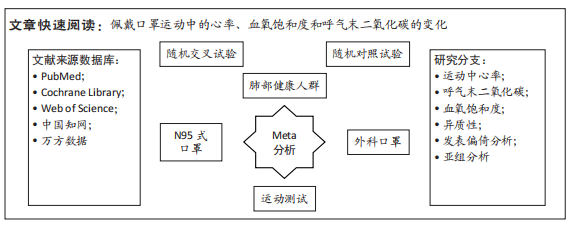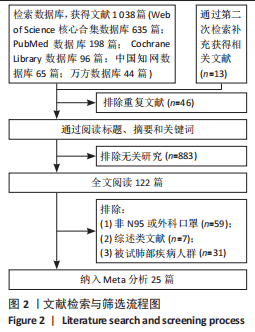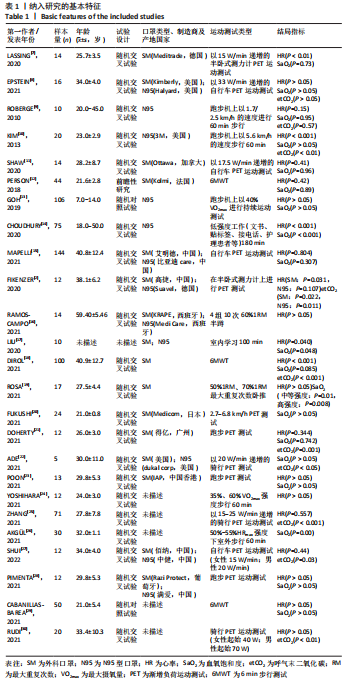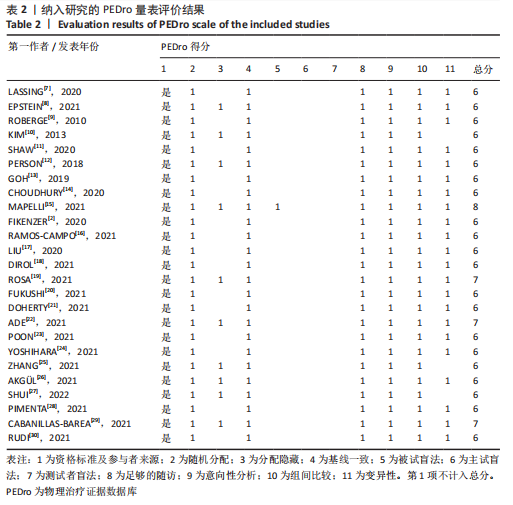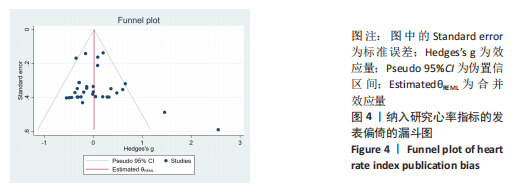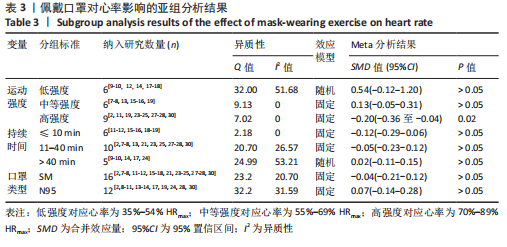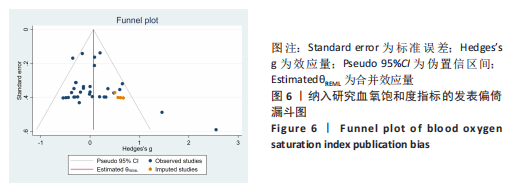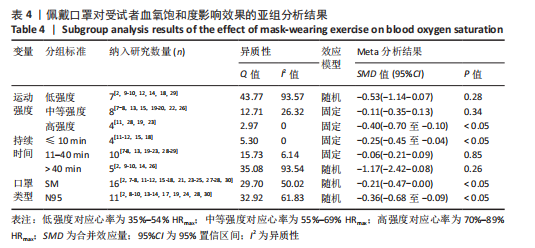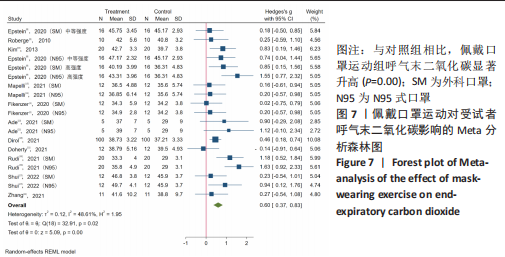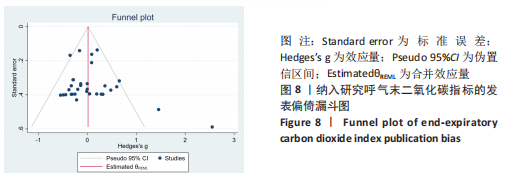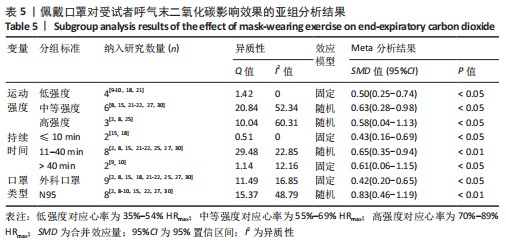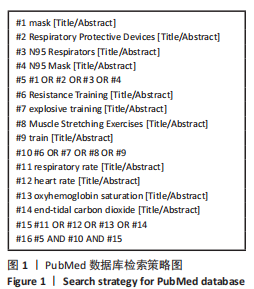[1] ZHENG C, POON ETC, WAN K, et al. Effects of wearing a mask during exercise on physiological and psychological outcomes in healthy individuals: a systematic review and meta-analysis. Sports Med. 2023;53(1):125-150.
[2] SANTOS-SILVA PR, GREVE JMDA, PEDRINELLI A. During the coronavirus (covid-19) pandemic, does wearing a mask improve or worsen physical performance? Rev Bras Med Esporte. 2020;26(4):281-284.
[3] FIKENZER S, UHE T, LAVALL D, et al. Effects of surgical and FFP2/N95 face masks on cardiopulmonary exercise capacity. Clin Res Cardiol. 2020;109(12):1522-1530.
[4] CHANDRASEKARAN B, FERNANDES S. “Exercise with facemask; Are we handling a devil’s sword?” - A physiological hypothesis. Med Hypotheses. 2020;144(1):1-4.
[5] 李清茹,王一帆,陈冠廷,等.细胞外囊泡治疗急性肾损伤临床前研究的Meta分析[J].中国组织工程研究,2023,27(24):3926-3936.
[6] 赵海燕,王林霞,赵德峰,等.心率变异性指标RMSSD和TLHRV在持续性运动训练负荷监控中的有效性研究[J].中国运动医学杂志,2018,37(6):461-467.
[7] LASSING J, FALZ R, POKEL C, et al. Effects of surgical face masks on cardiopulmonary parameters during steady state exercise. Sci Rep. 2020;10(1):1-9.
[8] EPSTEIN D, KORYTNY A, ISENBERG Y, et al. Return to training in the COVID-19 era: The physiological effects of face masks during exercise. Scand J Med Sci Sports. 2021;31(1):70-75.
[9] ROBERGE RJ, COCA A, WILLIAMS WJ, et al. Physiological impact of filtering facepiece respirator (‘N95 Masks’) use on healthcare workers. RESP CARE. 2010;55(5):569-577.
[10] KIM JH, BENSON SM, ROBERGE RJ. Pulmonary and heart rate responses to wearing N95 filtering facepiece respirators. Am J Infect Control. 2013;41(1):24-27.
[11] SHAW K, BUTCHER S, KO J, et al. Wearing of cloth or disposable surgical face masks has no effect on vigorous exercise performance in healthy individuals. Int J Environ Res Public Health. 2020;17(21):1-9.
[12] PERSON E, LEMERCIER C, ROYER A, et al. Effect of a surgical mask on six minute walking distance. Revue des maladies respiratoires. 2018;35(3):264-268.
[13] GOH DYT, MUN MW, LEE WLJ, et al. A randomised clinical trial to evaluate the safety, fit, comfort of a novel N95 mask in children. Sci Rep. 2019;9(1):1-10.
[14] CHOUDHURY A, SINGH M, KHURANA DK, et al. Physiological effects of N95 FFP and PPE in healthcare workers in COVID intensive care unit: a prospective cohort study. Indian J Crit Care Med. 2020;24(12):1169-1173.
[15] MAPELLI M, SALVIONI E, DE MARTINO F, et al. “You can leave your mask on”: effects on cardiopulmonary parameters of different airway protection masks at rest and during maximal exercise. Eur Respir J. 2021;58(1):1-10.
[16] RAMOS-CAMPO DJ, PÉREZ-PIÑERO S, MUÑOZ-CARRILLO JC, et al. Acute effects of surgical and FFP2 face masks on physiological responses and strength performance in persons with sarcopenia. Biology. 2021;10(213):1-9.
[17] LIU C, LI G, HE Y, et al. Effects of wearing masks on human health and comfort during the COVID-19 pandemic. IOP Conference Series: earth and Environmental Science. 2020;531(1):1-6.
[18] DIROL H, ALKAN E, SINDEL M, et al. The physiological and disturbing effects of surgical face masks in the COVID-19 era. Bratisl Lek Listy. 2021;122(11):821-825.
[19] ROSA BV, ROSSI FE, MOURA HPDSN, et al. Effects of FFP2/N95 face mask on low-and high-load resistance exercise performance in recreational weight lifters. Eur J Sport Sci. 2021;22(9):1326-1334.
[20] FUKUSHI I, NAKAMURA M, KUWANA S. Effects of wearing facemasks on the sensation of exertional dyspnea and exercise capacity in healthy subjects. PLoS One. 2021;10(1):1-10.
[21] DOHERTY C, MANN L, ANGUS SA, et al. Impact of wearing a surgical and cloth mask during cycle exercise. Appl Physiol Nutr Metab. 2021;46(7):753-762.
[22] ADE CJ, TURPIN V-RG, PARR SK, et al. Does wearing a facemask decrease arterial blood oxygenation and impair exercise tolerance? Respir Physiol Neurobiol. 2021;12(294):1-16.
[23] POON ET, ZHENG C, WONG SH. Effect of wearing surgical face masks during exercise: does intensity matter? Front Physiol. 2021;12(26):1-7.
[24] YOSHIHARA A, DIERICKX EE, BREWER GJ, et al. Effects of face mask use on objective and subjective measures of thermoregulation during exercise in the heat. Sports Health. 2021;13(1):463-470.
[25] ZHANG G, LI M, ZHENG M, et al. Effect of surgical masks on cardiopulmonary function in healthy young subjects: a crossover study. Front Physiol. 2021;12(1): 1-12.
[26] AKGÜL MŞ, OZCAN N, UZUN ME, et al. Physiological impact of wearing a surgical face mask during walking in the COVID-19 pandemic. Pedagog Phys Cult Sport. 2021;25(1):202-207.
[27] SHUI L, YANG B, TANG H, et al. Physiological effects of surgical and N95 masks during exercise in the Covid-19 era. Am J Med Sci. 2022;363(1):411-419.
[28] PIMENTA T, TAVARES H, RAMOS J, et al. Facemasks during aerobic exercise: implications for cardiac rehabilitation programs during the Covid-19 pandemic. Rev Port Cardiol. 2021;40(1):957-964.
[29] CABANILLAS-BAREA S, RODRÍGUEZ-SANZ J, CARRASCO-URIBARREN A, et al. Effects of using the surgical mask and FFP2 during the 6-min walking test. A randomized controlled trial. Int J Environ Res Public Health. 2021; 18(23):1-16.
[30] RUDI WS, MAIER F, SCHÜTTLER D, et al. Impact of face masks on exercise capacity and lactate thresholds in healthy young adults. Int J Sports Physiol Perform. 2021;1(1):1-4.
[31] GARRA GM, PARMENTIER D, GARRA G. Physiologic effects and symptoms associated with extended-use medical mask and N95 respirators. Ann Work Exp Health. 2021;65(7):862-867.
[32] HARAF RH, FAGHY MA, CARLIN B, et al. The physiological impact of masking is insignificant and should not preclude routine use during daily activities, exercise, and rehabilitation. J Cardiopulm Rehabil Prev. 2021;41(1):1-5.
[33] 王力翔,刘兴会,唐小燕,等.SARS-CoV-2“后暴发”阶段医院感染控制[J].科学通报,2021,66(Z1):439-452. |
